
(Photo by Kok Sheng)
With it being the June holidays, the Naked Hermit Crabs received an overwhelming response for our monthly guided tour on the Chek Jawa boardwalk. And so 5 guides showed up on Saturday morning, ready to take on the crowds and share the sights and sounds of this very special place.
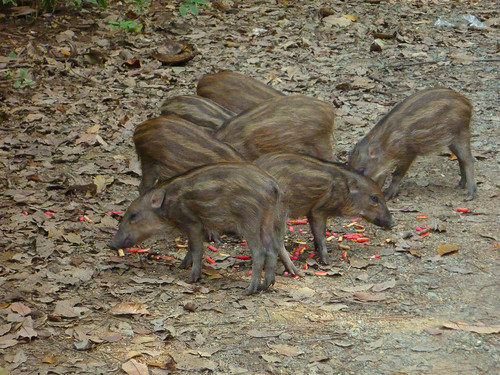
When the van dropped us off at the entrance, we saw the latest litter of wild boar (Sus scrofa vittatus) having some breakfast. Strangely enough, the resident sow, who was usually always nearby, was nowhere to be seen.

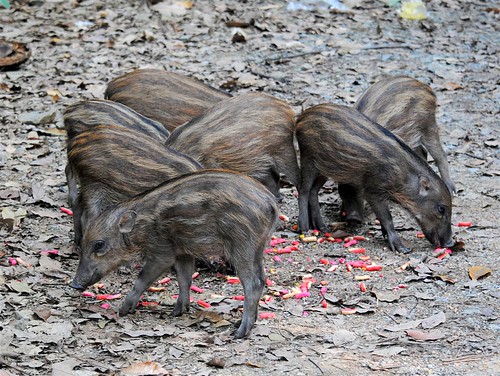
(Photo by Kok Sheng)
We met up with some of the visitors, who had also arrived early, and as we walked towards the Information Kiosk, we had a nice view of a male white-rumped shama (Copsychus malabaricus) that was calling in the bushes just along the path.

(Photo by Kok Sheng)

We had a large number of people signing up for the walk, so to avoid overcrowding, we sorted the visitors into 2 batches, which explains the 2 group photos.
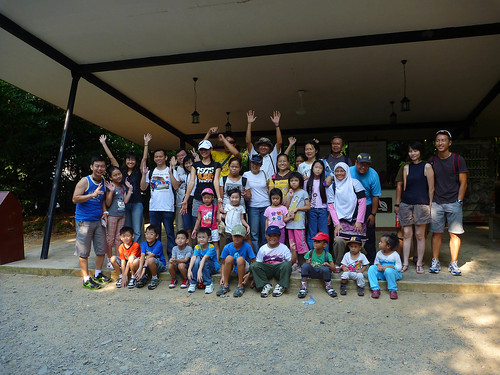
Ria and Kok Sheng started guiding the first batch, and while the rest of us waited for the other visitors to arrive, I found this large huntsman spider (F. Sparassidae) on the ground at a corner of the Information Kiosk.

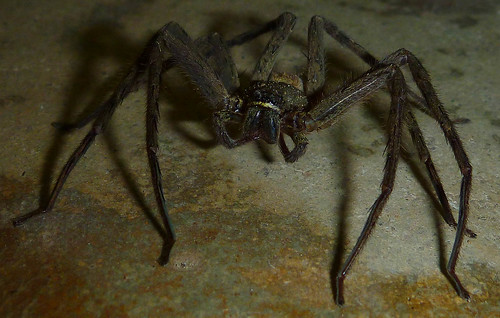
I managed to coax it to crawl onto a large leaf, and brought it out to show the others. The children were both fascinated and apprehensive, and a young girl, to her credit, said, "Put it back!" Although I'm not sure whether it's because she was afraid of the spider, or if she was more concerned about the spider's welfare. At least she didn't ask me to kill it.

We eventually had enough people to form another 2 groups, so Pei Yan and I began guiding as well.
Along the Coastal Boardwalk, we saw a white-bellied sea eagle (Haliaeetus leucogaster) soaring above, accompanied by a brahminy kite (Haliastur indus). 2 other brahminy kites were also soaring slightly further away.
Many of my visitors were surprised and amused when I mentioned that the white-bellied sea eagle is featured in the Bird Series currency notes, albeit at a very high denomination. I don't think many of us have actually had the chance to see a S$10,000 note.

(From nut's Singapore Banknotes Collection)
While doing research for this post, I also discovered that the brahminy kite is featured in the S$1,000 note.

(From nut's Singapore Banknotes Collection)
And so is the white-rumped shama, which decorates the S$50 note.

(From Delcampe.net)
There was a large school of small fish beneath the boardwalk.

(Photo by Ria)
Because the tide was so high, the swarms of fiddler crabs (Uca spp.) were nowhere to be seen, although we did see a few scattered individuals of porcelain fiddler crabs (Uca annulipes), while the gold-spotted mudskippers (Periophthalmus chrysospilos) and other assorted small mudskippers never failed to amuse and entertain as they frolicked at the water's edge.
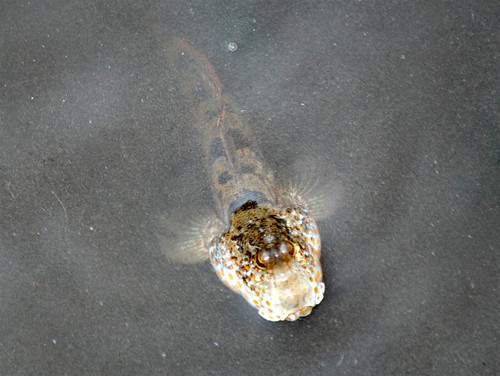
(Photo by Kok Sheng)
In the mangroves, we heard the calling of the collared kingfisher (Todiramphus chloris), another bird that is featured in the Bird Series, this time on the S$10 note.

(From nut's Singapore Banknotes Collection)
The tree-climbing crabs (Episesarma spp.) were refusing to show themselves; we saw the tips of legs peeking out from burrows in the mud lobster mounds, but never got the chance to see an entire crab. We did manage to see some very tiny fiddler crabs though.

(Photo by Kok Sheng)
One of the nipah palms (Nypa fruticans) was flowering!
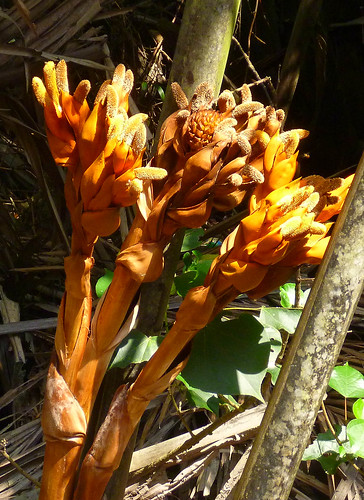
One of the visitors in my group pointed out a giant mudskipper (Periophthalmodon schlosseri), and as always, everyone was amazed at how large it was, compared to the other mudskippers we'd seen so far. At the base of the Jejawi Tower, where a pool of water had accumulated, we saw a young giant mudskipper, about the length of my index finger, as well as a few blue-spotted mudskippers (Boleophthalmus boddarti).
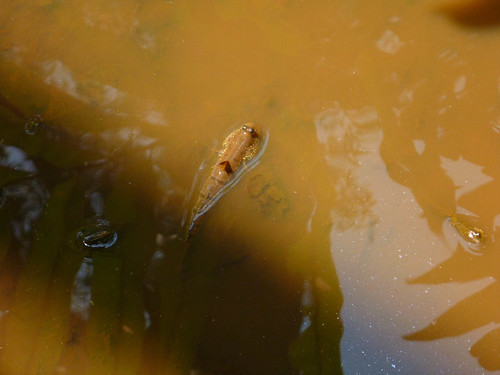
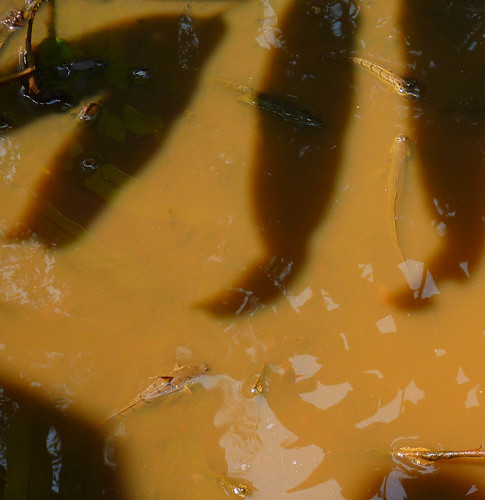
According to Ria and Pei Yan, the Jejawi Tower had been cordoned off, but there was no sign of any barriers by the time my group arrived, so we carried on as usual and climbed to the top.
The Oriental pied hornbills (Anthracoceros albirostris) were nearby, as we could hear their unmistakable calls, but alas, they remained out of sight. There was a small group of plain-throated sunbirds (Anthreptes malacensis) that was chirping and flying about in the jejawi (Ficus microcarpa).
Unfortunately, we encountered an ugly sight: vandals had struck yet again.


Not funny at all, you idiots.
For some strange reason, none of the fruit trees at Chek Jawa seemed to be bearing fruit. The durian (Durio zibethinus), rambutan (Nephelium lappaceum) and jackfruit (Artocarpus heterophyllus) that we usually point out to the visitors were all barren, when in previous years they would be laden with ripening fruit these few months. Ria did mention later on that the starfruit (Averrhoa carambola) had 2 small fruits, although I missed those. I hope the animals that usually rely on the bonanza when the fruits are in season won't be too badly affected.
We concluded the walk at House No. 1, and along the way, we saw the resident sow and one of the subadults from the previous litter trotting across the path.
I caught up with the rest of the guides and shared what we had encountered.
Some of the kids in Ria's group had helped to spot red junglefowl (Gallus gallus).

(Photo by Ria)
Kok Sheng's group really hit the jackpot; they had a Malayan water monitor (Varanus salvator), which is common enough, but visitors to Chek Jawa aren't always guaranteed of a sighting, unlike in other coastal nature areas.

(Photo by Kok Sheng)
They also managed to see the Oriental pied hornbill!

(Photo by Kok Sheng)
And even a pair of smooth otters (Lutrogale perspicillata)!

(Photo by Kok Sheng)
And there was an even more special sighting (at least from my perspective): Kok Sheng's group also saw a keel-bellied whip snake (Dryophiops rubescens)!
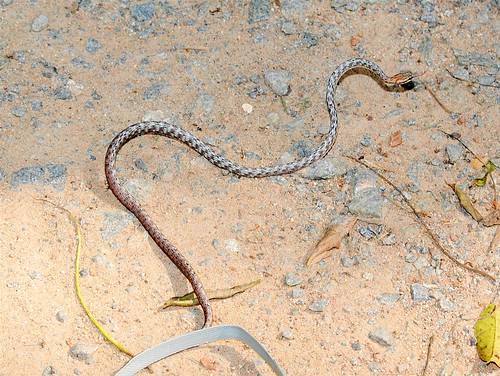
(Photo by Kok Sheng)
We sometimes see Oriental whip snakes (Ahaetulla prasina), but I think this is the first time this species has ever been encountered on our guided walks. The last time any of us had seen this particular species was in 2008, an encounter that I'd missed as well. Oh well.
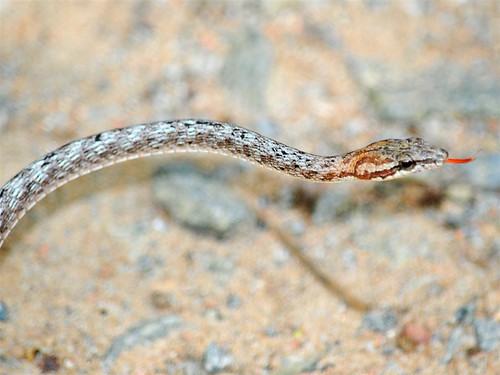
(Photo by Kok Sheng)
As we were leaving, we saw a pair of long-tailed macaques (Macaca fascicularis) attempting to raid the bicycles that had been parked at the gates, probably in search of snacks to steal.
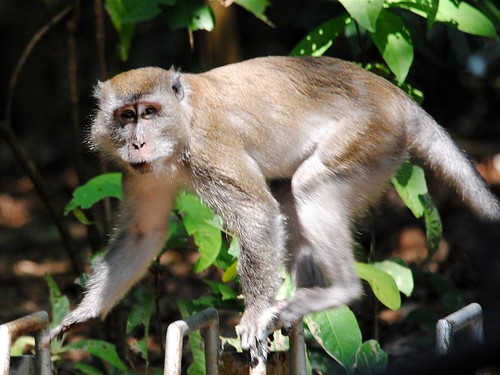
(Photo by Kok Sheng)
The piglets were busy having their lunch. It's strange that we haven't given the resident sow a nickname yet.
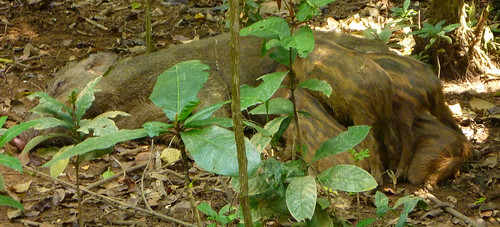
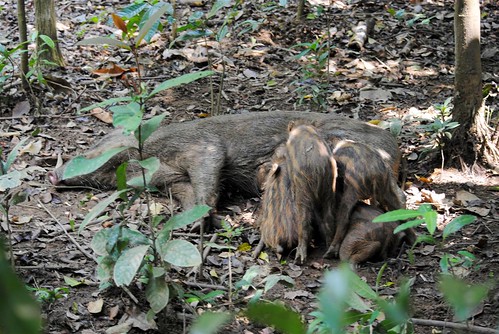
(Photo by Kok Sheng)
I think the wild boar are getting used to the occasional treat from the minivan drivers, although unlike the monkeys, they don't seem to cause any trouble and don't harass other people. As long as visitors don't start tossing junk food to the wild boar, and as long as the humans are able to behave themselves and give the wild boar the space they need, I hope this comfortable coexistence can continue.
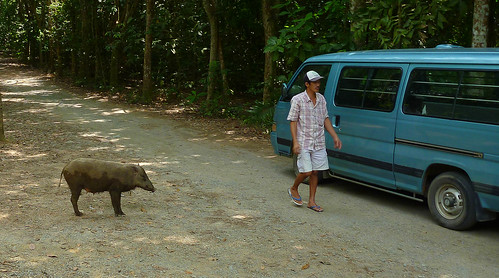
We had lunch at Ubin Town, and learned that unlike Chek Jawa, the fruiting season was going strong elsewhere in Pulau Ubin.

(Photo by Ria)
Can't wait to return to Chek Jawa soon!
For posts by fellow guides, check out the following:
Kids out at Chek Jawa with the Naked Hermit Crabs! by Ria
Chek Jawa fun during June holidays by Kok Sheng
Chek Jawa Guided Walk with Wild Boars, Otters, Hornbills and Snake by Pei Yan